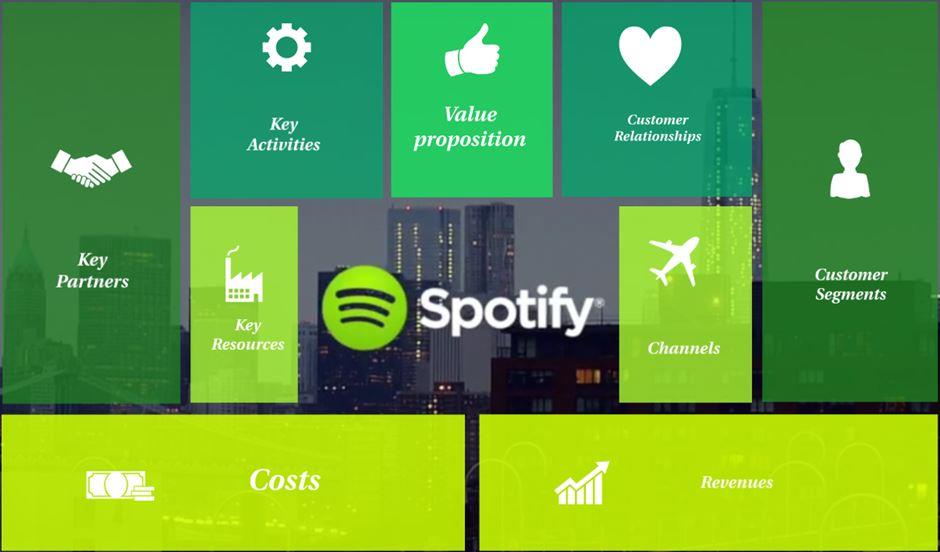
The music industry experienced massive growth after 2015 when music streaming applications like Spotify, Apple Music, and many other kinds of music streaming apps and software came into existence. More than 140 million subscribers have registered themselves with the streaming platform, while more than 30 million subscribers have registered themself with the Apple Music platform, thus it has become one of the biggest sources of revenue.
According to a report by FastCompany, the revenue from streaming services has experienced huge growth in recent years, it has increased by 57% during 2016 while the revenue generated through downloads and physical albums by 14% and 17% during the same year. Even many of the products related to the entertainment industry, which emerged in 2004, gained great popularity during these years.
And when it comes to the online music streaming platform, one cannot ignore the contribution of Spotify, it has contributed hugely to the music industry.
The freemium business model of this music streaming platform has attracted millions of subscribers to become part of the streaming platform, subscribers can leverage the playlist of their choice and can pay for the music they listen to, this results in reducing piracy substantially.
Spotify’s Business Model has overcome numerous streaming platforms due to its advanced features and delivery of music, which any of the subscribers can leverage without any delay or latency.
What is Spotify?
Spotify is a video, music, and podcast streaming freemium service which was launched in Sweden in 2008. This music streaming platform offers free streaming of the right protected material when subscribers go for the free plan while they can leverage many other advanced features such as improved music downloads, streaming quality, and much more are provided to subscribers who opt for monthly or yearly subscription packages.(Source)
Spotify is a two-sided marketplace where music lovers and artists encounter on a single platform. Its business model depends on the freemium model, which offers free paid membership and ad-supported services. This music streaming platform was founded with the belief to offer universal accessibility of music with a seamless experience based on streaming video and audio.
In 2017 it generated more than €4 billion from which almost 90% opted for premium memberships while 10% based on a free service that is ad-supported. In the same year, the company’s operating loss amounted to around €378 million. (Source)
How Does Spotify Work?
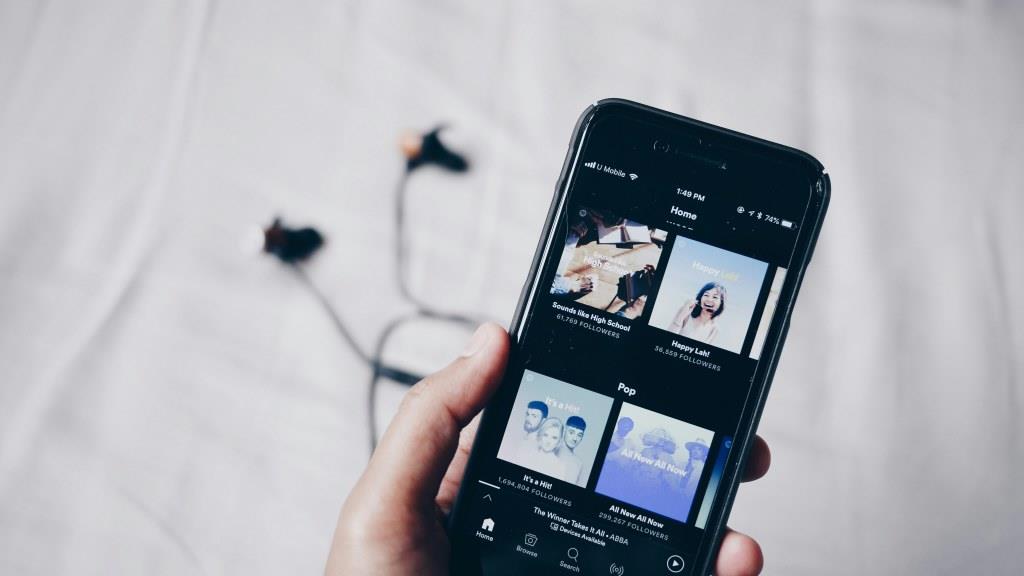
Image: (Source)
Spotify is working accurately on the various available operating systems. It works accurately like other SAAS and stores data stored on the servers. There is a minimized load in the server, and the user is provided with the best service without any by saving the temporary encrypted version, they can play songs and explore the recently played list in the user’s system as the cache.
Spotify purchases a license from artists, labels, publishers, and other rights holders, it does so to provide streaming music on its platform. It uses a complex algorithm that determines the royalty to be paid to these artists.
All artists and holders don’t get the same royalty fees, the success of the streaming platform depends on the contracts. This depends on the fees of the songs and the currency value of an individual country. According to the recent Verge report, the average “per stream” pay to rights holders lands ranges from $0.006 and $0.0084.
Explore All About the Subscription Plan of Spotify
Spotify follows a freemium business model strategy, which helps it generate money through advertisements and paid subscriptions. The business model of Spotify is not complicated, it just works like any other music streaming advertisement like any other freemium service such as MailChimp, YouTube, or any other.
Premium subscriptions can be considered as one of the vital revenue sources where the download and advertisements in which limitations are removed, the song bitrate has increased drastically to 320 kbps. There are mainly three types of subscription plans that any individual subscriber can opt for when it comes to music streaming platforms like Spotify.
Spotify Free Version
It is one of the vital subscription plans that comes on the top of the streaming platform for Spotify. It can be considered as one of the basic versions out of three subscription plans that any of the users can choose; users who choose to opt for this version can have access to almost all the content but with certain limits. This limitation includes numerous advertisements, no access to enjoy the song when offline, limited access to the quality of the tracks played, and many more.
Spotify Premium
It is a premium version of Spotify; it costs around $9.99 per month. Spotify premium version is free of all the limitations that users have to face when they are using a free version of the streaming platform.
Spotify Family
Spotify recently launched the family version of the premium subscription for its users who are sharing the same living space. This updated version offers all the premium features to a maximum of six people and costs around $14.99, this has proven to be more beneficial for the users as most of the members of the family can leverage the benefit of the subscription plan at the same time.
Spotify Business Model: Know How Spotify Makes Money
Spotify is one of the popular on-demand music streaming services that enables users to browse through numerous catalogs of music which has been licensed through multiple record labels. Users are also allowed to create and share their own playlists; they can even share the same with their friends and families whom they know very well.
This internet-based service satisfies the needs of a end number of music lovers by enabling them with more than 35 million songs. Users can explore these songs on modern devices, including PlayStation, Windows, Linux computers, macOS, Xbox One, and many more on both the platforms that are Android and iOS.
What Makes Spotify Improve its Sales
Spotify has established its branches in more than 59 countries worldwide. There are unique dynamics that are affecting the acceptance of on-demand streaming services to a great extent. Numerous aspects are triggering the rise of this music streaming platform.
Growing Craze of Spotify Among Millennials
According to recent data, it was found that more than 65.85 million Americans were using music streaming services in 2017. Users leverage the use of this streaming platform for around 14 hours, and 39 minutes every week. In the report, it was also found that around 55.8% of the entire U.S. population and more than 68.4% of the U.S. internet users have become online radio users by the end of the year 2018.
In the United States, this music streaming platform is used by most Millenials. It was found that users under 25 years of age consume more than 15% of data age between 25 to 45. Millennials in North America are expected to spend an average of around 107 minutes (that is 1 hour and 47 minutes) on the streaming platform. According to the source, more than 40% of millennials opt to subscribe to music services subscriptions to leverage all the advantages of the streaming platform.
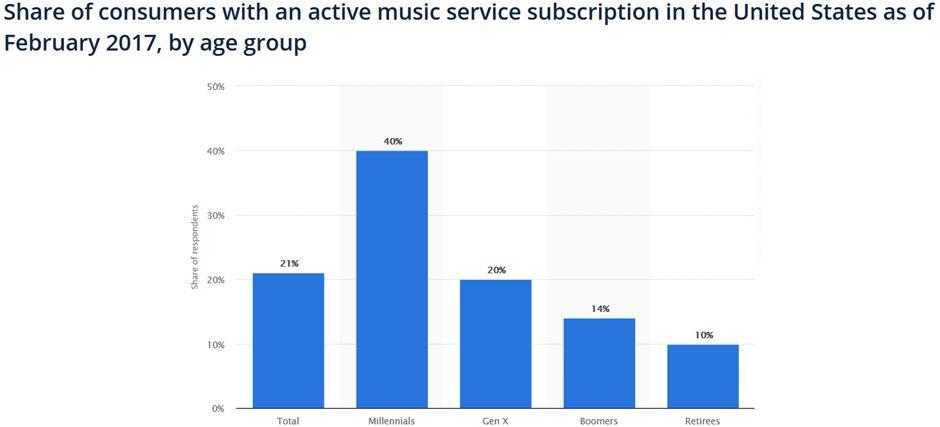
Image: (Source)
Regulate Music Distribution for Artists
Music and other streaming services are properly licensed when it comes to Spotify’s music streaming solution. For example, it is delivered by distributors and labels all over the globe. Online services pay more royalties to most of the artists. On-demand streaming service helps to manage internet privacy issues and offers more credits to neighboring artists, this streaming platform has proved to be a legal hub for almost all music lovers all over the world to stay tuned in to their favorites.
Improved Internet Connectivity
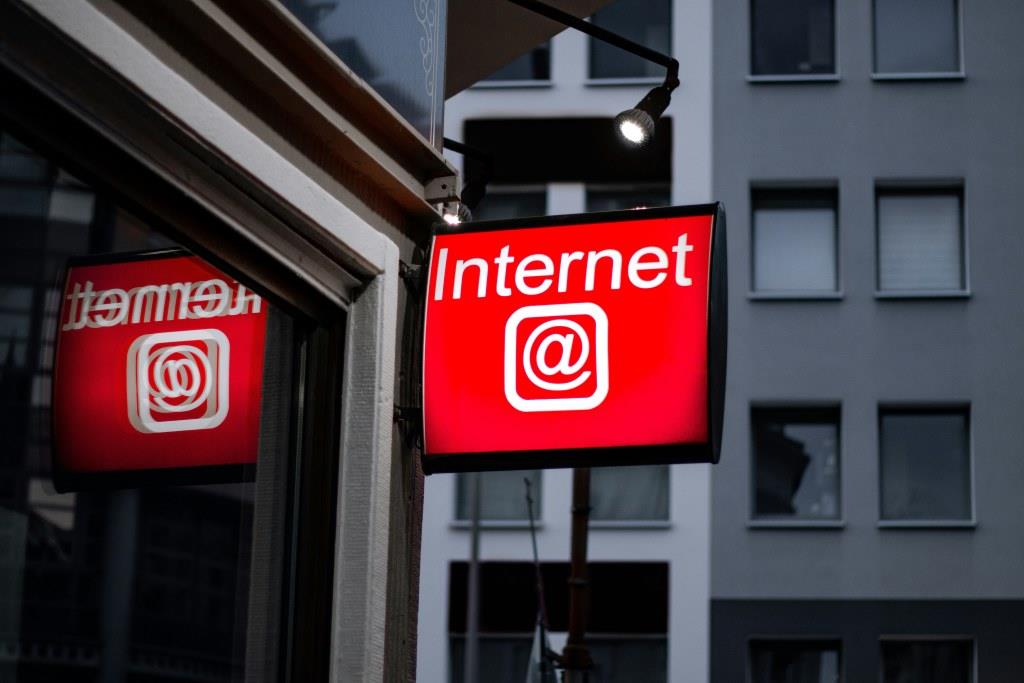
Image: (Source)
If any of the users want to have access to digital services, then it becomes vital for them to have an internet connection. Making a big investment in infrastructure and facilities becomes vital for almost all mobile network operators, this allows users to access high-speed internet services and provides access to seamless music online, which improves the possibility for millions of users. According to Statista, more than 4.54 billion people are active internet users. This number is going to increase with each passing day and has provided a huge rise to on-demand music services such as Spotify music streaming app solutions.
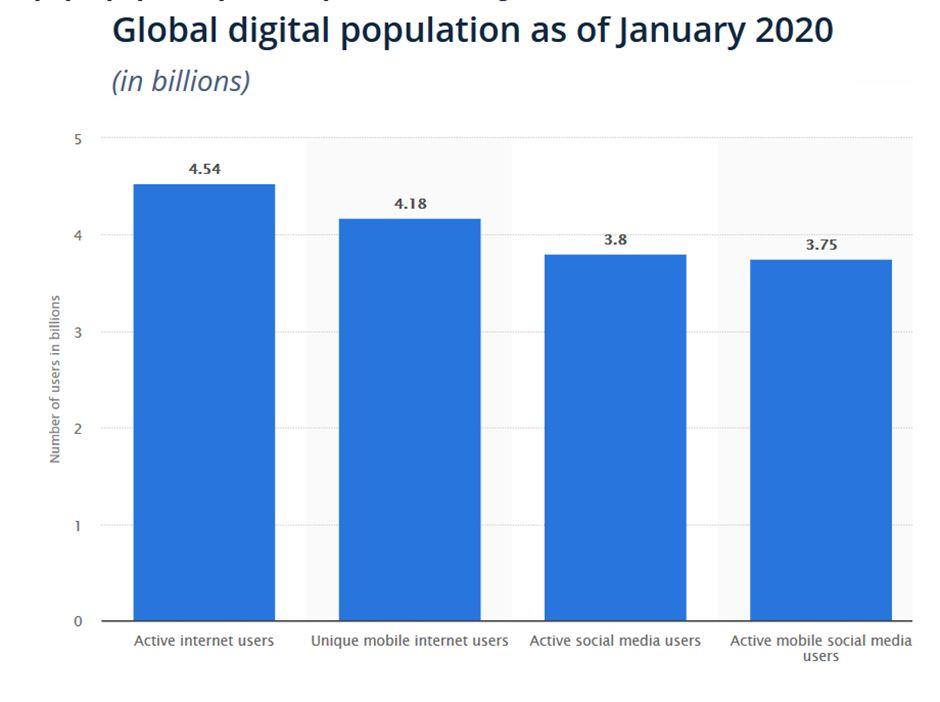
Image: (Source)
How Spotify Works: Business Model
Spotify consists of more than 35 million songs, and all of these songs are stored on its servers. Instead of bogging servers, internet bandwidth, and internal computers used to stream audio for millions of end-users, Spotify completely relies upon the P2P network.
Spotify uses social networking to search for nearby users who prefer to use its service. It also explores whether the caches of the song requested by the user are available on the server they use or not. If the cache of the user contains the requested song, then this music streaming platform enables those computers to play the music. This is one of the main reasons why Spotify’s servers don’t get overloaded.
Spotify uses cached files to keep the playback speedy. Tracks that users store temporarily on their used device can be termed as cache. When an individual replays the same song, then instead of downloading it again, the song is played locally from the cached file, which had stored the file previously when it was played for the first time. This advanced music streaming platform preloads subsequent tracks of particular albums to avoid delays in the playback.
All the songs available on an app like Spotify are saved in the Vorbis format; this makes the size of the audio file much smaller so that it can be transferred easily and more speedily than ever before. Most of the songs that are available on the Spotify platform stream at 160 KBPS, but most of the songs stream at 320 KBPS for those users who have opted for a Premium subscription.
On the business front, Spotify gets licenses from various sources such as publishers, labels, artists, and other rights holders for streaming music on the platforms where they are present.
Spotify uses complex algorithms to pay a royalty to the artists and also to finalize the royalty per stream for every label or artist. The platform uses numerous factors like the currency value of the country, country (in which the song gets played), artist value, contracts, and much more when it comes to calculating royalty per stream. Sources reveal that the average per-stream payout that the holder gets when they prefer to use Spotify lands between $0.006 and $0.0084.
How Spotify Makes Money: Revenue Streams
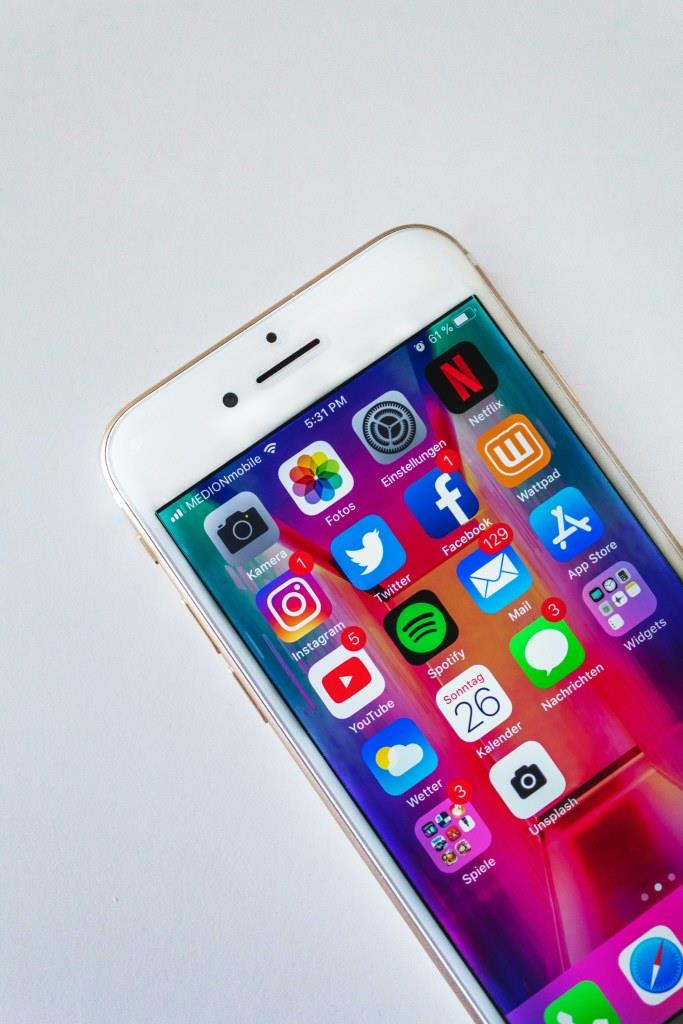
Image: (Source)
Spotify uses two sources to generate huge penny; these sources include:
- A free tier supported by advertisement.
- A premium tier supported by a paid subscription.
Freemium Version
The freemium version of Spotify facilitates users to search and explore the catalog of songs that they prefer to play on their devices. However, this music streaming on-demand service comes with advertisements that provide the users with a lot of entertainment. The mobile apps of Spotify restrict users when they opt for a freemium version than the web and desktop apps. Advertisers who prefer to pay for this streaming platform for their bending turns can turn out to be a fundraising mode for the streaming platform.
Premium Version
Users who opt for this version of Spotify can easily access music on all devices that also without any limitations, these platforms include tablets, televisions, and smartphones. It provides platform users with a seamless experience and facilitates them to download songs to their devices.
Users can enjoy listening to high-quality audio and videos even when they are offline by downloading it from the streaming platform. The subscription offers follow under various categories, users can choose any of the subscription plans at their convenience, this subscription plan includes $4.99 per month for students, around $9.99 for a regular account, and $14.99 per month for the family account holder.
Effective Ways in Which Spotify Has Opted to Attract More Users
Besides displaying native banner ads, Spotify is also making use of modern technology to target new users globally with the help of audio ads. This streaming platform supports numerous advertisement models for the same purpose, these attractive models include different types of ads such as:
- Sponsored Playlists.
- Homepage Takeovers.
- Branded Moments.
- Sponsored Sessions.
- Advertiser Pages
- Branded Playlists.
- Video Takeovers.
- Display.
- Overlay.
- Audio.
These types of advertising ads differ in size, user engagement, size, and much more. Explore how Spotify is leveraging the advantage of different types of ads and how it differ from each other.
Branded Moments
Spotify has opted for this advertising model as it ensures that marketers can easily tell the story to the users who are really interested in its platform. It also helps in delivering the right message at the right time, which can result in generating the best outcome for your business. For example, entertainment providing a brand can easily target its users when they turn to the gym or any other weight loss workout, they can offer them a playlist that encourages them to stay tuned with the goal set.
Sponsored Sessions
These types of ads allow for offering an uninterrupted listening experience to users. Users can exchange any of the videos on the streaming platform to leverage the best experience that this platform provides to them. However, this type of session is meant for selected computer and mobile users and only for some of the selected countries.
Display Ads
These types of ads are mostly displayed at the bottom of the Spotify app, these ads are available with clickable images and display only for 30 seconds when the user opens any of the new content on the streaming platform.
Welcome Back Ads
When any of the users return back to the Spotify platform, then they are welcomed with welcome-back ads. Users can explore such kinds of ads on their mobile as well as computer. Users can prefer to miss such kinds of ads as it is an overlay and hard to miss out on the same.
Advertiser Pages
These pages can be considered as a microsite, which is integrated seamlessly with the Spotify player. They contain every type of content that is available on the webpage of this streaming platform, this might include clickable images, blogs, news, comments, links, and much more.
With its more than ten advertising models and premium version, Spotify has gained huge popularity among users in less time and has managed revenue of 4.9 billion EUR (2017 FY) with the help of the same. However, to improve its balance sheet with each passing second Spotify is continuously trying to improve its business model, this streaming platform believes that improving business models can result in improving their profit margin to a great extent. Spotify successfully launched its IPO in 2018; most of the users these days are leveraging numerous things on this platform.
Spotify: Know How You Can Opt for Similar Music Streaming Platform
Spotify is making use of modern technology to introduce new functionalities and features to the users, this helps in keeping users engaged with the streaming platform. This streaming platform also uses advertising as a source of monetization, which has resulted in building economic stability, besides paying around 70% of its total revenue to most of the right holders.
If you are aiming to develop an app similar to Spotify, then you can take the support of a development company that has expertise in developing such kind of music streaming applications. You can also opt for ready-made solutions such as Spotify clone or any other clone solution to take your streaming business to new heights.
Gaurav Kanabar serves as the Chief Technologist for Digital Content and Platforms at Luckymatrix. Alongside his role at Luckymatrix, Gaurav is CEO of Alphanso Technology, an India-based software development company developing YouTube Music Clone and Soundcloud Clone and more for helping entrepreneurs, independent artists, and more.